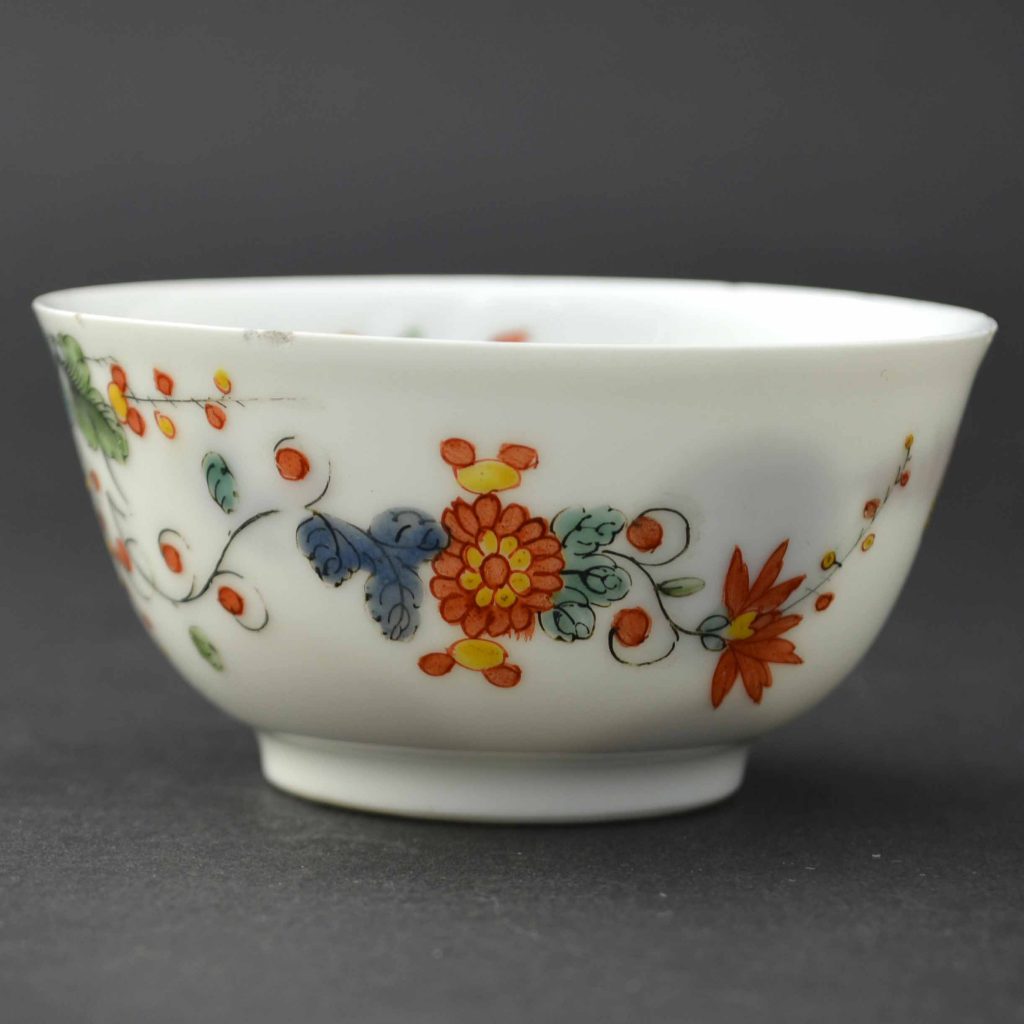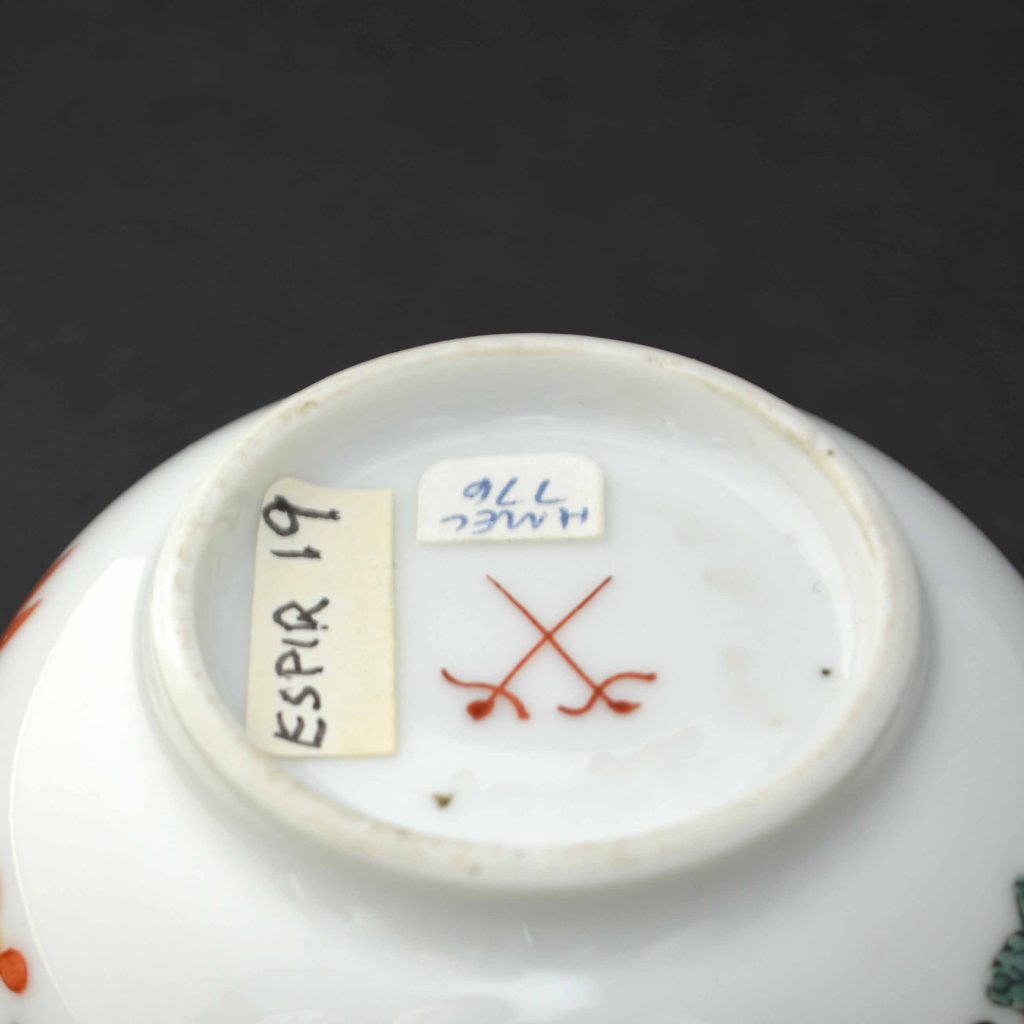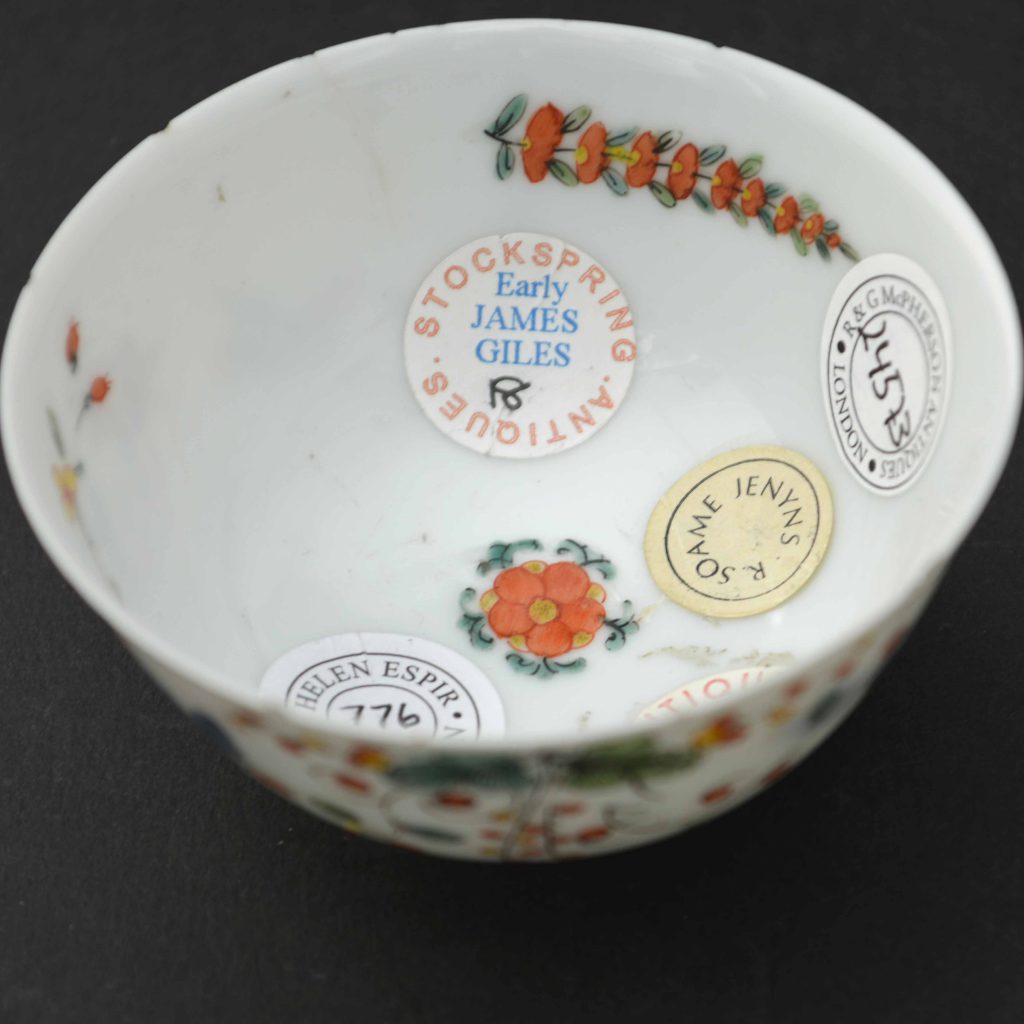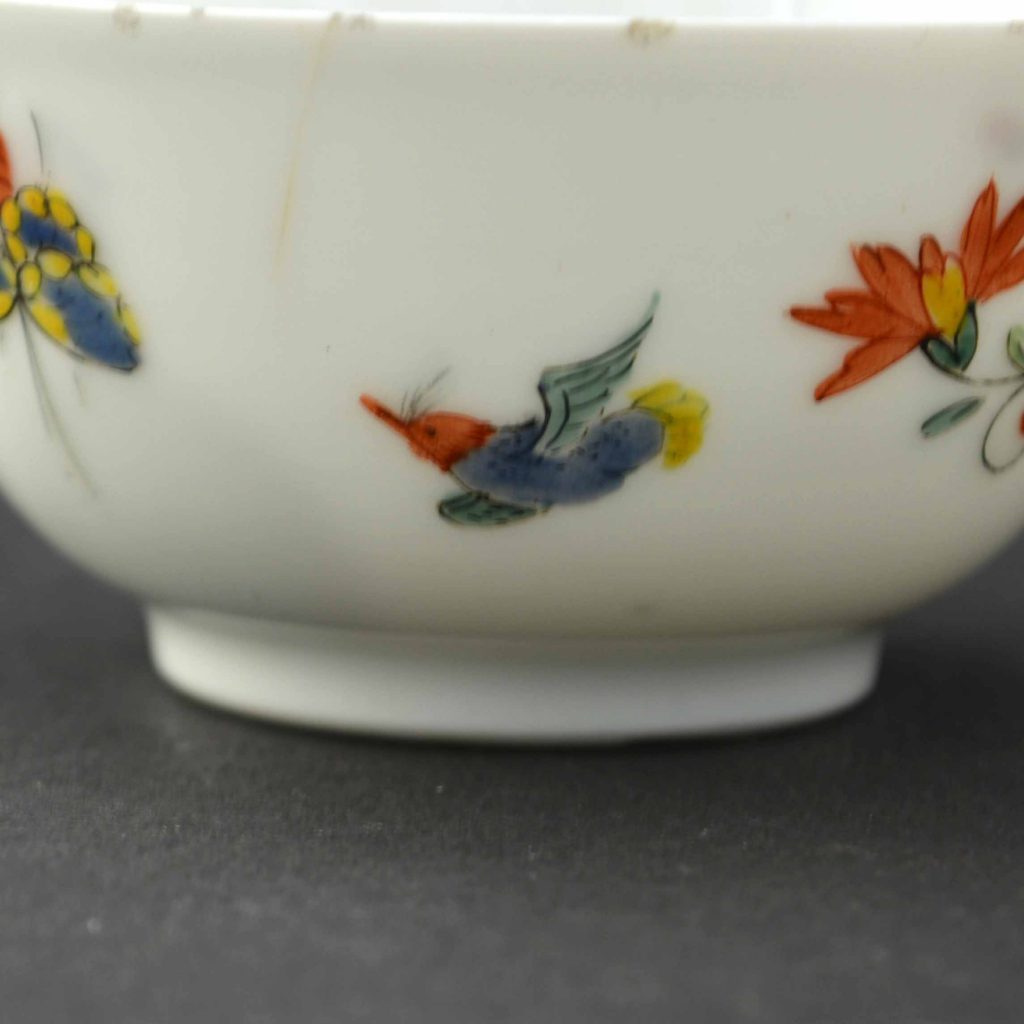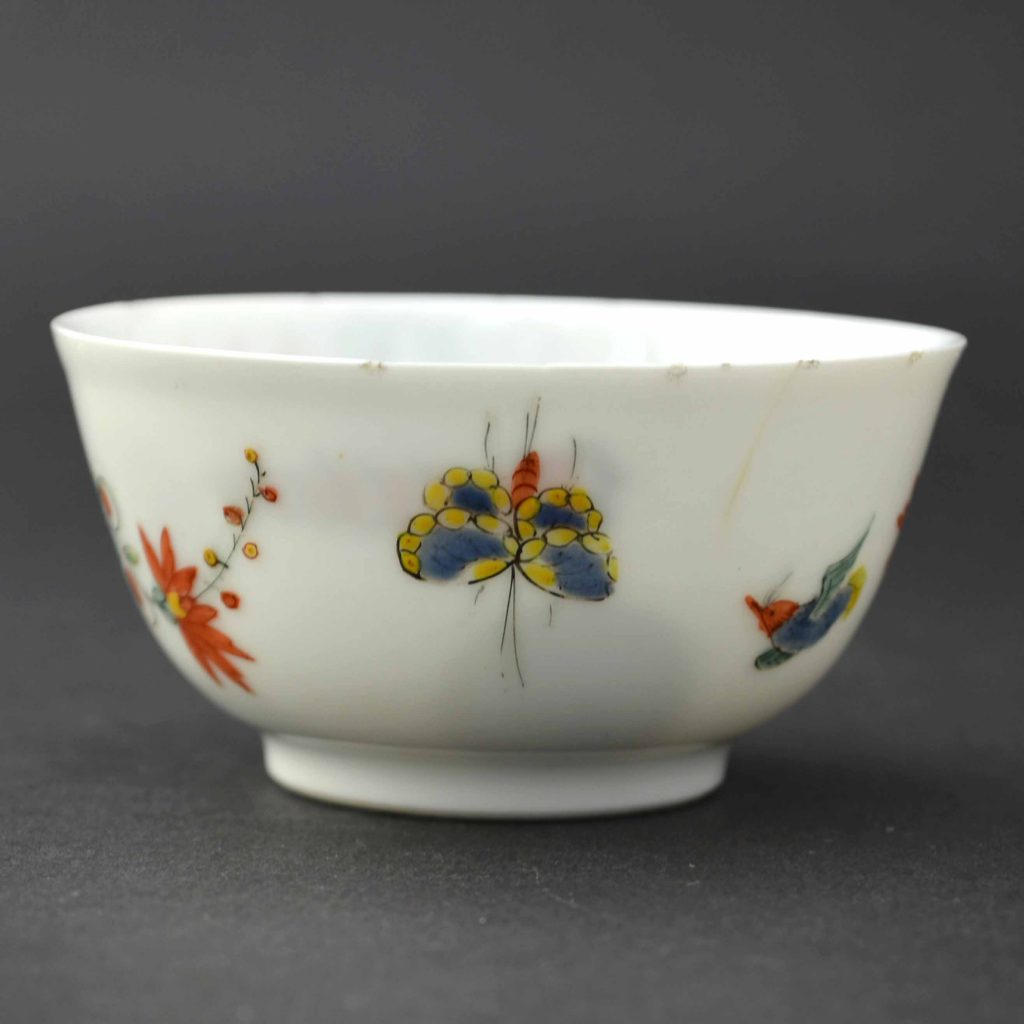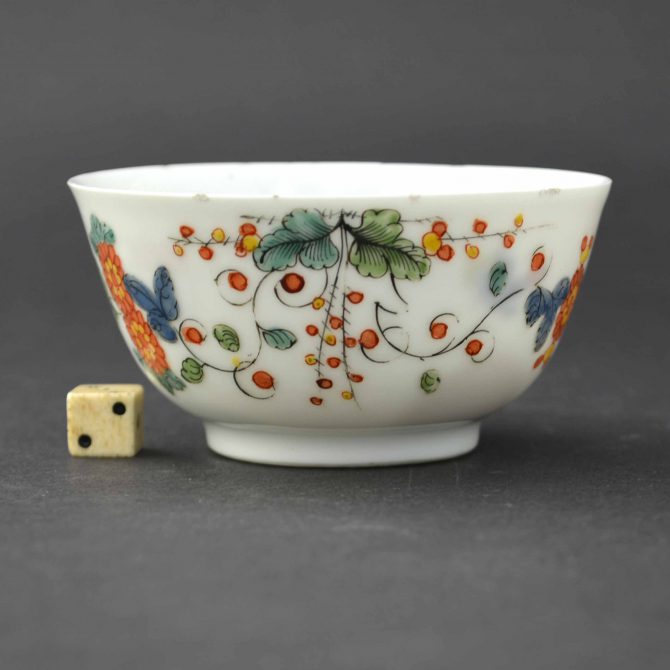
A Rare London Decorated Teabowl Closely Allied to Limehouse Decoration c.1745 – 1750
A rare Chinese export porcelain teabowl decorated in the Kakiemon style closely allied to porcelain from Limehouse c.1745-1752. Decorated in iron-red, blue, turquoise, yellow and black enamels with chrysanthemum and other flowers, with scrolling vines and tendrils and a butterfly. The base with a crossed-swords in imitation of Meissen.
SOLD
- Condition
- There is a crack from the rim c.14 mm. There are numerous minute rim chips.
- Size
- Diameter : 7 cm (2 3/4 inches)
- Provenance
- Soame Jenyns Collection (1904-1976). R and G McPherson Antiques 7th March 200. The Helen Espir Collection of European Decorated Chinese Export Porcelain : "a member of the Oriental Ceramic Society and collector, with her husband. Having made a typical collection of Song and provincial Ming blue and white, they decided to concentrate on what used to be called `clobbered` porcelain. She is the author of the standard work on the subject, European Decoration on Oriental Porcelain,2005, the first to examine the work of European decorators on Chinese porcelain throughout the eighteenth and nineteenth centuries, focusing on enamellers in Holland, Germany and England. She has learned Chinese." From Provenance ; Collectors, Dealers & Scholars : Chinese Ceramics in Britain & America (Roy Davids, Dominic Jellinek, Privately Printed, 2011. ISBN 978-0-9570148-0-0).
- Stock number
- 24573
- References
- Published in : European Decoration on Oriental Porcelain 1700 - 1830 (Helen Espir, Jorge Welsh Books, 2005) page 221. And in : The Early James Giles and his Contemporary London Decorators (Stephen Hanscombe, Stockspring Antiques. 2008) page 45, fig. 8.
Information
English Decoration on White Chinese Porcelain :
This type of English enamel decoration on Chinese export porcelain should be seen in a different way to what is referred to as `over-decorated` or `clobbered` porcelain. Those terms refer to Chinese porcelain that was imported into Europe as finished articles, but were either too plain for merchants to sell or their profits could be enhanced by adding enamels over the existing Chinese decoration. The present example was plain white when it arrived in England, it would not have been salable and so no merchant would have ordered it to retail. However, James Giles must have ordered allot of white porcelain specifically for decoration at his workshop in London. The shapes ordered were the lasted fashion in Europe as was the decoration he added. To my mind this makes these objects separate and distinct from other Chinese porcelain, China only provided the blank `canvas` and even that was of a form dictated to by Europe. For this reason these objects could primarily be see as English, they would have been totally alien to the Chinese.
